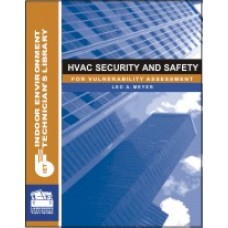
|
| Richard D. Alaniz |
That’s when the U.S. Equal Employment Opportunity Commission (EEOC) got involved. After a settlement agreement in July 2012, Goodyear agreed to pay $20,000, re-hire Adams, and enter into a two-year consent decree that included providing anti-discrimination training to managers, human resources department, and supervisors at the Fayetteville plant, posting information at the site about employees’ rights under federal anti-discrimination laws, and providing periodic reports to the EEOC on its hiring practices.
“The EEOC is committed to fighting discrimination in the workplace,” said Lynette A. Barnes, regional attorney for the EEOC's Charlotte District Office. “Employers must be careful not to make assumptions about an individual based on his or her disability.”
In order to ensure a safe workplace while fully complying with the ADA, employers need to understand their rights and responsibilities, as well as the rights of job applicants and employees.
Federal Regulations
When it comes to workplace safety, companies face regulations that may seem to contradict themselves. Under the Occupational Safety and Health Act of 1970, employers must provide a safe and healthful workplace. At the same time, employers cannot discriminate against disabled employees or would-be employees, based on a concern that those people may present a health risk to themselves and others.
Employers can consider safety issues when hiring, but they must tread very carefully to ensure that they are acting legally. According to the EEOC, the ADA “expressly permits” employers to set qualification standards that will exclude individuals who pose a direct threat to the health or safety of themselves and others, if a reasonable accommodation cannot lower the risk to an acceptable level.
However, the ADA does not allow employers to assume a threat exists. Companies need to rely on objective medical advice to determine whether a disabled employee represents the risk of substantial harm to himself or others.
Under the ADA, employers must provide a reasonable accommodation to allow qualified employees with disabilities to do their job, as long as the accommodation does not create an undue hardship. What qualifies as an undue hardship can depend on the company’s size, financial resources, burdens of accommodations already in place, and the employer’s business needs.
Federal contractors especially need to be up-to-date on disability laws. The U.S. Department of Labor has proposed a new rule that would require federal contractors and subcontractors to set a hiring goal of having 7 percent of their workforces be people with disabilities. Furthermore, the Office of Federal Contract Compliance Program (OFCCP) is considering going even farther. The agency is considering a sub-goal (within the 7 percent) of 2 percent for individuals with severe disabilities.
What to Do Next
Well-meaning employers can easily trip up over questions of safety and employing people with disabilities. By taking the right steps, employers can ensure that they maintain a safe workplace while offering disabled workers an opportunity for employment.
• Take a Group Approach
Getting a handle on the topic should involve a wide range of groups within the company, including those who handle human resources, risk assessment, accident prevention, training, and anyone who has hiring or oversight authority.
In an area as sensitive as this, it’s often a good idea to bring in outside experts, such as safety committees as well as legal counsel. Federal regulations are often unclear and state laws can vary. It’s important to consult with someone who has experience and knowledge specifically about disability, safety, and liability issues.
• Take a Fresh Look at the Working Environment
Some jobs present obvious risks for all employees, disabled or not. Some less obvious risk factors for disabled employees can include poor lighting and narrow hallways. Employers should review all their workspaces to see what can be improved to make the workplace safer for all employees, especially disabled workers. Brighter lights, potential hazard elimination, and better signage about exit areas could ward off a significant number of potential problems.
• Train and Train Some More
When faced with issues involving ADA claims and reasonable accommodations, companies need consistent policies and approaches and thorough training so that everyone understands their roles and the company’s expectations.
In a recent survey, the Society for Human Resources Management (SHRM) and the Cornell University ILR School’s Employment and Disability Institute asked human resources managers about their practices and policies for employing people with disabilities. Survey respondents cited supervisor knowledge as the greatest barrier in hiring and advancing people with disabilities. Cost of accommodations and attitudes and stereotypes ranked second and third.
While companies may be hamstrung by the cost of accommodations, they can easily improve supervisor knowledge in recognizing disability issues as well as work to eliminate inappropriate attitudes and stereotypes. Once the company has developed policies and procedures for hiring disabled workers, everyone at the company should be regularly trained on those policies. Employees and potential employees need to know their rights, and managers and supervisors must know how to respond when they learn an employee has a disability or they are asked to consider a reasonable accommodation.
Along with training, employers should encourage all employees to escalate concerns and questions around disability matters. If there is not human resources personnel on staff, the company should identify exactly who to direct questions to, and that person or those people should be easily accessible and responsive. A fast response can minimize problems before they grow out of control and help demonstrate the company’s willingness to work with disabled employees and abide by all the relevant laws and regulations.
• Forget the One-Size-Fits-All Approach
When considering whether a disabled worker would present a safety hazard for a particular position, companies should examine all the variables. This includes the type and level of disability of the job applicant or employee and the essential functions of the job.
• Develop a Dialogue
Under the ADA, employers and employees must engage in an “interactive process” regarding the issue of reasonable accommodations. When employees request a reasonable accommodation, managers and supervisors need to approach the conversation with an open mind and try to work with the employee to find a solution that is acceptable to everyone.
• Consider What Others Have Successfully Done
Perhaps not surprisingly, the SHRM/Cornell survey found that larger organizations were more likely to have formalized programs about retaining and advancing those with disabilities. Public companies and non-profits were also more likely to have policies and procedures than private companies. Organizations struggling with hiring, training, and safety issues for disabled employees should look outside their own companies to see what others have done in similar situations.
• Plan for the Unexpected
Safety can be compromised during day-to-day routines, but emergency situations can represent safety challenges for any employee. This can be particularly true for employees with disabilities, whether those disabilities include mental impairments or a physical challenge such as limited mobility or hearing problems.
The U.S. Department of Labor’s Office of Disability Employment Policy encourages employers to consider safety issues around emergency planning. Once a company establishes an emergency plan, every employee must be able to understand it and find the necessary information. “In short, [effective communication] directly affects an individual’s ability to remain safe in an emergency, and can mean the difference between life and death, or well-being and injury,” the agency warns on its website. “Regardless of the methods used, communications to employees with disabilities must be as effective as those to non-disabled employees.”
• Write Everything Down
Documentation is the key to maintaining consistent policies. It can also help companies rationalize their decisions regarding a requested accommodation, or that a disabled person could not safely perform a particular job, and defend those decisions against lawsuits or regulatory actions if necessary.
Workers and employers alike want a safe workplace, and the government wants to ensure that disabled employees have opportunities to work. In order to ensure that all those goals are met, companies need to understand their obligations under all the relevant federal, state, and local laws and regulations.
Publication date: 12/17/2012









